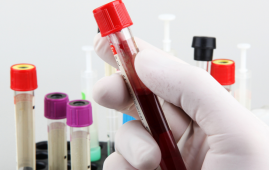

Researchers have found a way to screen for genetic alterations in dangerous brain tumors in under 90 seconds using artificial intelligence. This might potentially speed up the detection and treatment of gliomas, according to a study.
An AI-based diagnostic screening system called DeepGlioma was created by a group of neurosurgeons and engineers at Michigan Medicine in collaboration with researchers from New York University, the University of California, San Francisco, and other institutions. This system uses rapid imaging to analyze tumor specimens obtained during an operation and find genetic mutations more quickly.
The recently created approach successfully identified mutations used by the World Health Organization to establish molecular subgroups of the condition in a study of more than 150 individuals with diffuse glioma, the most prevalent and lethal primary brain tumor. The average accuracy was over 90%.
The results are published in Nature Medicine.
“This AI-based tool has the potential to improve the access and speed of diagnosis and care of patients with deadly brain tumors,” said lead author and creator of DeepGlioma Todd Hollon, M.D., a neurosurgeon at the University of Michigan Health and assistant professor of neurosurgery at U-M Medical School.
Given that the advantages and hazards of surgery vary among patients with brain tumors depending on their genetic make-up, molecular categorization is becoming more and more important in the diagnosis and treatment of gliomas. In fact, patients with a particular kind of diffuse glioma called astrocytomas can live an additional five years on average after having their entire tumor removed.
However, diffuse glioma molecular testing availability is constrained and not consistently offered at facilities that treat patients with brain malignancies. When it is accessible, according to Hollon, it may take days or even weeks to get findings. “Barriers to molecular diagnosis can result in suboptimal care for patients with brain tumors, complicating surgical decision-making and selection of chemoradiation regimens,” Hollon said.
Before DeepGlioma, there was no way for doctors to tell diffuse gliomas apart during surgery. The technology, which was developed in 2019, combines deep neural networks with the stimulated Raman histology optical imaging technique, which was also created at the University of Michigan, to examine brain tumor tissue in real time.
“DeepGlioma creates an avenue for accurate and more timely identification that would give providers a better chance to define treatments and predict patient prognosis,” Hollon said.
Even with optimal standard-of-care treatment, patients with diffuse glioma face limited treatment options. The median survival time for patients with malignant diffuse gliomas is only 18 months.
While the development of medications to treat the tumors is essential, fewer than 10% of patients with glioma are enrolled in clinical trials, which often limit participation by molecular subgroups. Researchers hope that DeepGlioma can be a catalyst for early trial enrollment.
Progress in the treatment of the most deadly brain tumors has been limited in the past decades- in part because it has been hard to identify the patients who would benefit most from targeted therapies,” said senior author Daniel Orringer, M.D., an associate professor of neurosurgery and pathology at NYU Grossman School of Medicine, who developed stimulated Raman histology. “Rapid methods for molecular classification hold great promise for rethinking clinical trial design and bringing new therapies to patients.”
more recommended stories
 Osteoarthritis Genetics Study Uncovers New Treatment Hope
Osteoarthritis Genetics Study Uncovers New Treatment HopeOsteoarthritis- the world’s leading cause of.
 Antibody Breakthrough in Whooping Cough Vaccine
Antibody Breakthrough in Whooping Cough VaccineWhooping cough vaccine development is entering.
 Scientists Unveil Next-Gen Eye-Tracking with Unmatched Precision
Scientists Unveil Next-Gen Eye-Tracking with Unmatched PrecisionEye-tracking technology has long been a.
 Men5CV: Hope for Ending Africa’s Meningitis Epidemics
Men5CV: Hope for Ending Africa’s Meningitis EpidemicsA landmark global health study led.
 Stem Cell Therapy Shows 92% Success in Corneal Repair
Stem Cell Therapy Shows 92% Success in Corneal RepairA groundbreaking stem cell therapy known.
 Gene Therapy for Maple Syrup Urine Disease
Gene Therapy for Maple Syrup Urine DiseaseResearchers at UMass Chan Medical School.
 How Fast Are Your Organs Aging? Simple Blood Test May Tell
How Fast Are Your Organs Aging? Simple Blood Test May TellNew research from University College London.
 HEALEY Platform Accelerates ALS Therapy Research
HEALEY Platform Accelerates ALS Therapy ResearchA New Era of ALS Clinical.
 Low-Oxygen Therapy in a HypoxyStat Pill? Scientists Say It’s Possible
Low-Oxygen Therapy in a HypoxyStat Pill? Scientists Say It’s PossibleA New Approach to Oxygen Regulation-HypoxyStat.
 Early Alzheimer’s Diagnosis with Advanced Tau Test
Early Alzheimer’s Diagnosis with Advanced Tau TestA New Biomarker Test Promises Early.

Leave a Comment